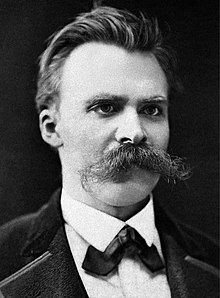Xenosaga/Episode I
Basic Information
[edit | edit source]Game notes
[edit | edit source]In Xenosaga: Episode I, players assume the role of Shion Uzuki and five other protagonists. Episode I focuses heavily on the Gnosis situation as well as the Zohar Emulators. It mainly serves as an exposition, or an introduction to the characters and the developing plotline. The game features no universal world map, but the player can travel to several regions of the game through the Encephalon. This Encephalon is also featured in Episode II.
Other features include an in-game database, several mini-game "plug-in" systems that can be accessed from Shion's portable UMN console, an e-mail system, and a turn-based battle system that includes both character and A.G.W.S. battles.
While the timeline of Xenosaga does not correspond completely to that set out in Xenogears -- some fans speculate that Xenosaga's creators wanted to avoid any legal battles with Square Enix -- the two are largely synchronous. T.C. 4767 is the year the events of the game take place, according to the Xenogears Perfect Works Book, but in that same year the Eldridge is supposed to have been launched and no mention of that is made in Episode I. The most common explanation is that Xenosaga is a re-envisioning of the Xenogears concept, using many similar elements, themes, and plotlines.
Xenosaga: Episode I sold a million copies worldwide.
Criticism
[edit | edit source]Some critics believed that the artwork in Xenosaga was not quite up to par with expectations, with the characters often having what some call the "glass eyes" style that is featured in some anime series. Episode II offers a different art style.
Others were not quite satisfied with the battle engine, or the use of the large mechas known as A.G.W.S., the "gear lookalikes". Many were also frustrated at the game's casual name dropping without in-game explanations, arguing that the in game searchable glossary was a cheap device to avoid exposition. However, since Xenosaga is a series, all of these elements will and have been integrated into the plot. A significant number of these terms and characters were developed in Xenosaga Episode II, and more will be explained in Episode III.
Xenosaga: Episode I Reloaded
[edit | edit source]In mid-2003, Namco also released a special version of Episode I in Japan to drum up hype for the upcoming Xenosaga: Episode II called Xenosaga: Episode I Reloaded, which featured the English voice-acting and a few special features, like costume switching and a play-back library of all the game's movie scenes.
Xenosaga Freaks
[edit | edit source]On April 28 2004, Namco released Xenosaga Freaks in Japan, a supplementary game including a Xenosaga-themed word-puzzle game based off of Namco's Mojipittan called Xenopittan, a comical adventure game Xenocomi, the complete dictionary of terminology from Episode I enhanced with audio and video clips, and a playable demo of Episode II. This is the closest that Xenosaga has come to Xenogears' "Perfect Works" anthology.
Walkthrough
[edit | edit source]- Part 1: Woglinde
- Part 2: Pleroma
- Part 3: Elsa
- Part 4: U-TIC Battleship
- Part 5: Dock Colony and Cathedral Ship
- Part 6: Exploration and the Encephalon
- Part 7: Kukai Foundation
- Part 8: The Song of Nephilim
- Part 9: Proto Merkabah
Glossaries
[edit | edit source]Name Explanation
[edit | edit source]
Der Wille zur Macht (ゼノサーガ エピソードI 力への意志), literally "The Will To Power", is a reference to Nietzsche's thus named concept of an assumed rudimentary a-teleological force that elicits all activity stinted to existence itself.